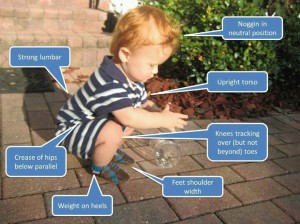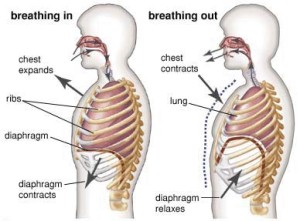Squat like a baby
I would argue that how baby squats is how we were meant to. Through our childhood development we squat this way and we are not told how to. It is part of our DNA and we all do it. As we learn to sit on chairs and couches, I would say that we slowly lose this natural ablility.Many of us would have trouble getting down in this position due to stiff hips, knees and ankles. However, many of us should be able to. Try lying on your back, can you bring your knees to your hip level? If yes, you should be able to squat that deep as well. In this case it is not because of your joint stiffness, it is because you can’t control your body segments to allow you to get into this position.
One simple observation is that many people squat with their knees and not their hips. When I test people I will see their knees dive forward, when their hips should go back. Many people have bad knees because they use their knees way too much and should use their hips.
Watch how a baby will shift weight into his/her heels and drop down into the hips, not forward into the knees. Also, most babies will keep a great spine position and not round their back. Why can a baby do this and we can’t? Part of the reason is that we tend to lose automatic control of our deep spine stabilizers that control our spine position. However you can get it back!
The squat is such a fundamental movement of everyday life. It is how we sit on chair, get off the toilet and how we get to the floor. Many times the problem is how people squat and not because of their knees and back. The trick is to use other muscles (i.e. core) and joints (i.e. hip) to help. This movement is a pattern and you can retrain it. I have helped many patients get their squat back.
Dr. Paul


